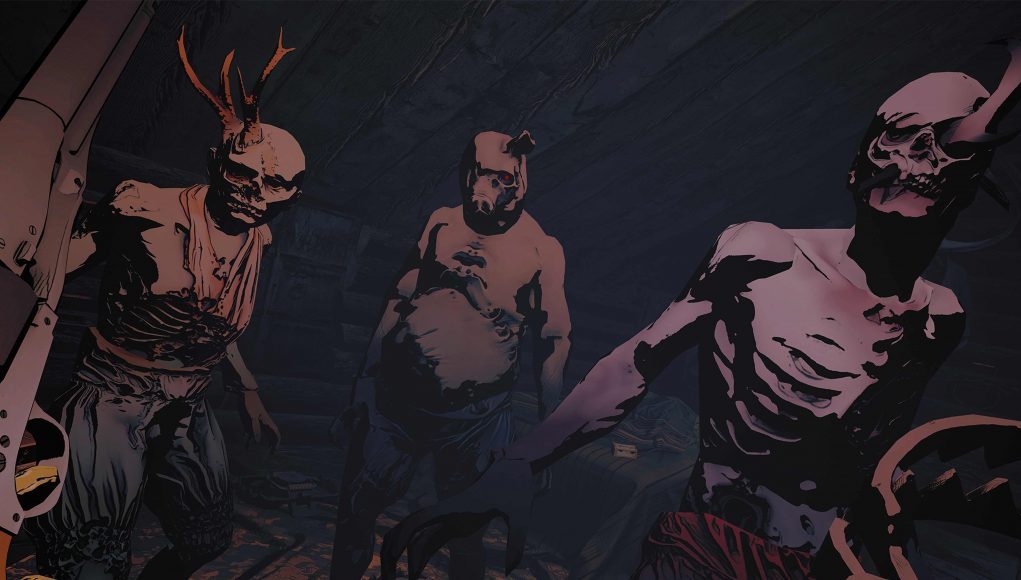Lies Beneath is a single-player survivor horror from Drifter Entertainment, the studio behind Gunheart (2018), Rise of the Gunters (2018), and the Quest version of Robo Recall (2016). Departing somewhat from its previous VR titles, Drifter has delivered a gritty, stylish standalone tale that serves up equal doses of violence and fear, making for a unique offering in Quest’s still fairly demure library of games. A few issues keep me from truly loving it, but Lies Beneath still proves to be a super stylish and serviceable shooter.
Lies Beneath Details:
Developer: Drifter Entertainment
Publisher: Oculus Studios
Available On: Oculus Quest (Rift coming soon)
Reviewed On: Quest
Release Date: March 31st, 2020
Price: $30
Gameplay
The car has gone off the side of the road. Your dad has disappeared, and the trail of blood leading into the cave beckons you to enter. A shadowy figure is watching, and that’s when the break in reality begins—and you’re not sure where it ends.
You can imagine with that description alone that playing Lies Beneath was a pretty daunting task. At the beginning, the game sets the stage by suggesting users wear headphones for complete audio immersion. It’s not a bad idea if you want to shut out anyone else in the house who’s idly bumping around, because after a while you’ll begin to tune into every directional audio signal for signs of your imminent demise from the game’s ghoulish creatures.
While keeping out those random outside jostles can be important to maintaining your sanity, I still opted to go with Quest’s default audio because I kind of instinctively wanted some semblance of separation from the game’s gritty melange of vibes, which felt like equal parts Tales of the Crypt, The Texas Chainsaw Massacre, and Sin City.
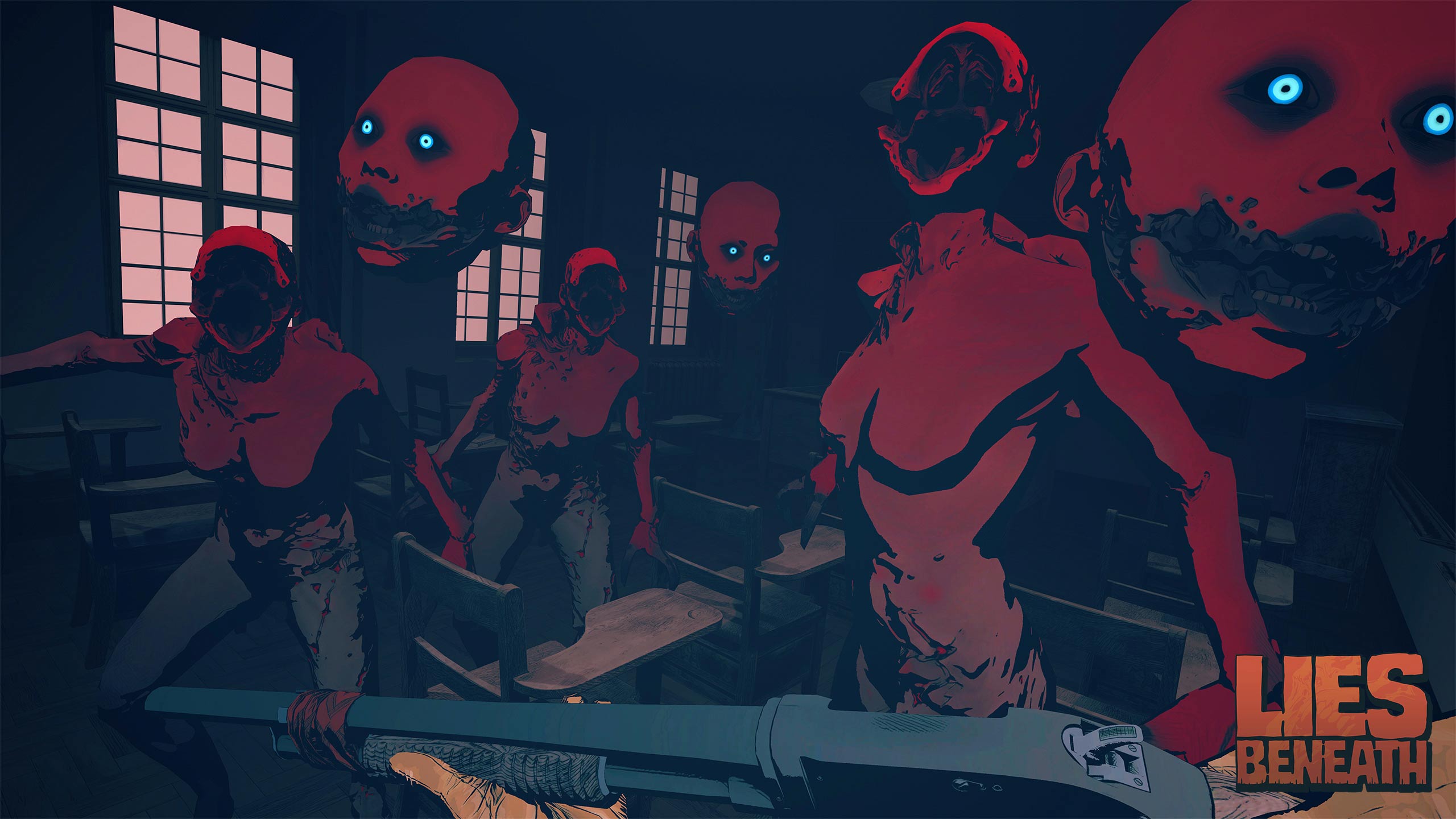
Firstly, Lies Beneath is a Quest game that’s punching above its weight class. It cleverly hides its mobile roots with a hand-drawn, cell shaded style that plays out in an extremely dark and super claustrophobic swath of environments. As a result, loading new areas is invisible and instantaneous, enemies are always lurking around each corner, and you’re left with very little break in pacing as a result. Pressure on the player to move forward is at a near constant, which in part justifies the game’s singular gauntlet; there’s little exploration to be had outside of the main pathway, but you may easily be fooled into thinking otherwise with how long and truly winding the game’s levels are.
The game’s constant pressure is relieved only momentarily at generic rest stops, which oftentimes includes the same set of ammo supply crates, weapons, food for mobile health regen, and a fire that cures any wounds you may have. Outside of these periodic stops, there are also save points scattered throughout the game in the form of lightable lanterns.
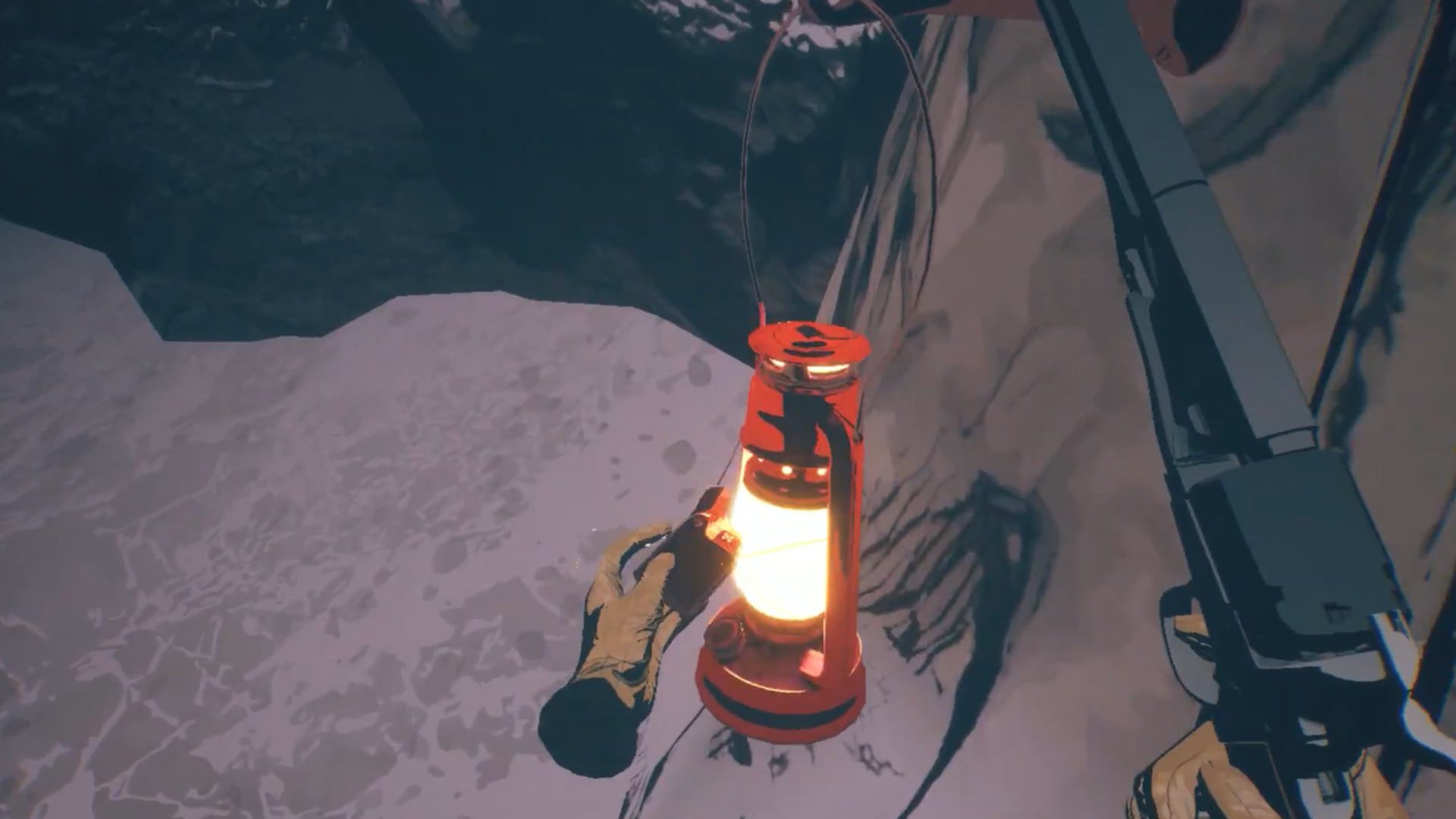
These stops add a much more ‘gamey’ feeling than I would have preferred, as you’re basically fed all of the kit you need (or accidentally drop along the way) at painfully obvious moments, and in the same predictable format. There are some tiny bits of exploration as you run across found items that allow you to find more loot at your rest stop, but like I said, you’re basically funneled through a very linear pathway.
As for making your way through the narrative, you’ll find a modest variety of weapons along the way, including things like pistols, shotguns, and bladed weapons such as axes, butcher knives, and machetes. Shooting, I think, is purposefully meant for mid to short-range kills; there are no iron sights, and virtual recoil makes shooting feel a little unpredictable at longer ranges, which puts most of the action a few meters away at any given time. Ammo is rare on all but the easiest of the three difficulty settings, making your shooting skills especially relevant as you default to keeping baddies at arm’s length.
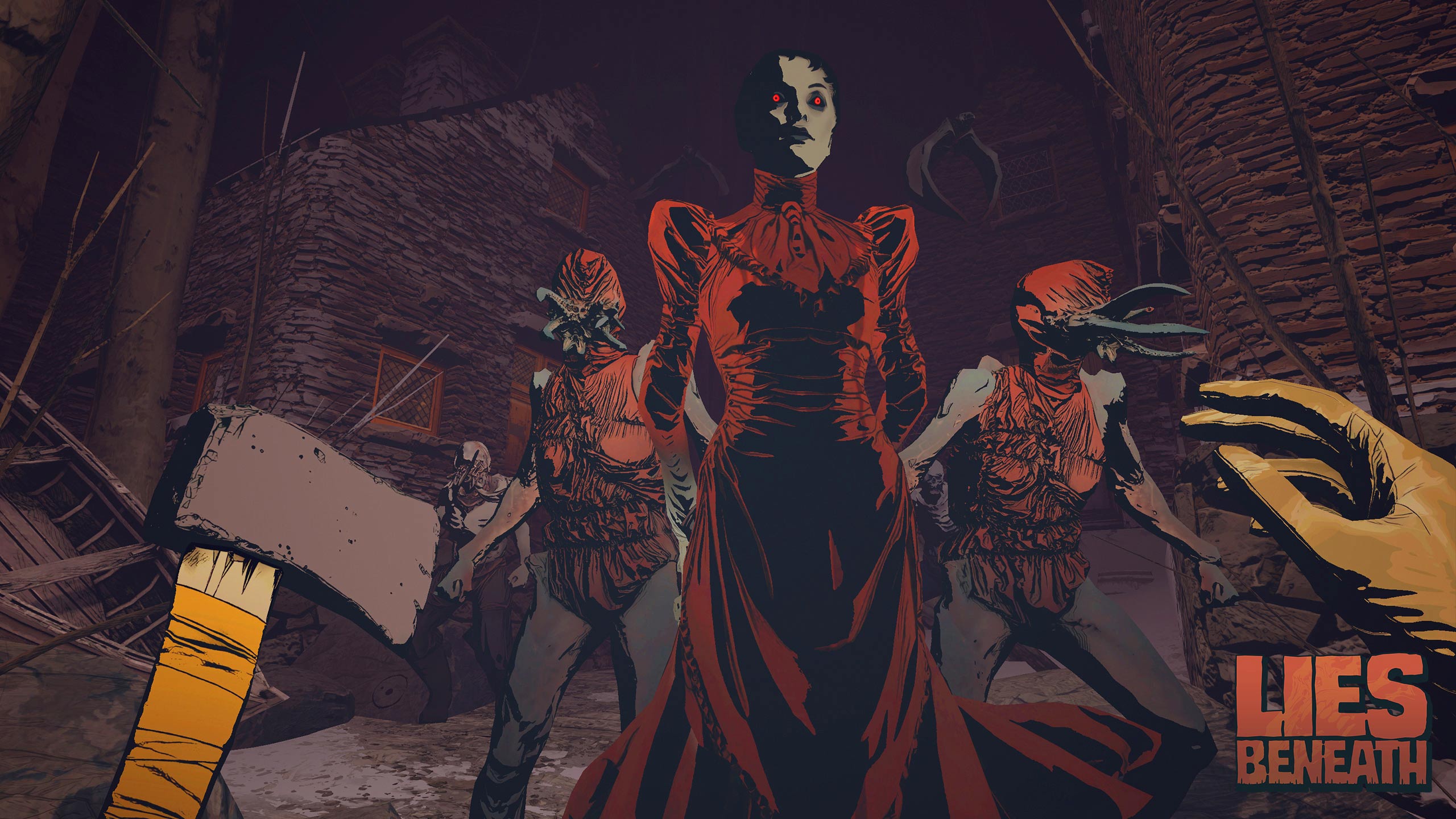
Melee is a big part too, but it feels more like a simplistic last resort than a true alternative to shooting, as you can’t appreciably block or dodge incoming attacks, leaving you to swing frantically and hope for the best.
In all of this, your lighter provides you with a dim light as well as a constant hint as to where you need to go next, as the flame waves in the direction of your next objective. Not only that, but it also injects a simple reticle for your pistols, and also reveals enemy weak points for one-shot dispatches. The reticle helps cover up some of my shooting woes, but I’d rather have functional sights personally.
This, as you’d imagine, using all of these items keeps you on your toes, as you need to quickly juggle between bladed weapons, pistols, food, and two-handed weapons such as shotguns. The inventory system is minimal, relegating you to holsters; two points on your hips, two on your shoulders, and a single one on your chest reserved for the lighter. Playing seated can be a pain in the ass if you have arm rests, so you should either play standing or on a flat surface like a couch so you can easily reach down to holster and unholster items.
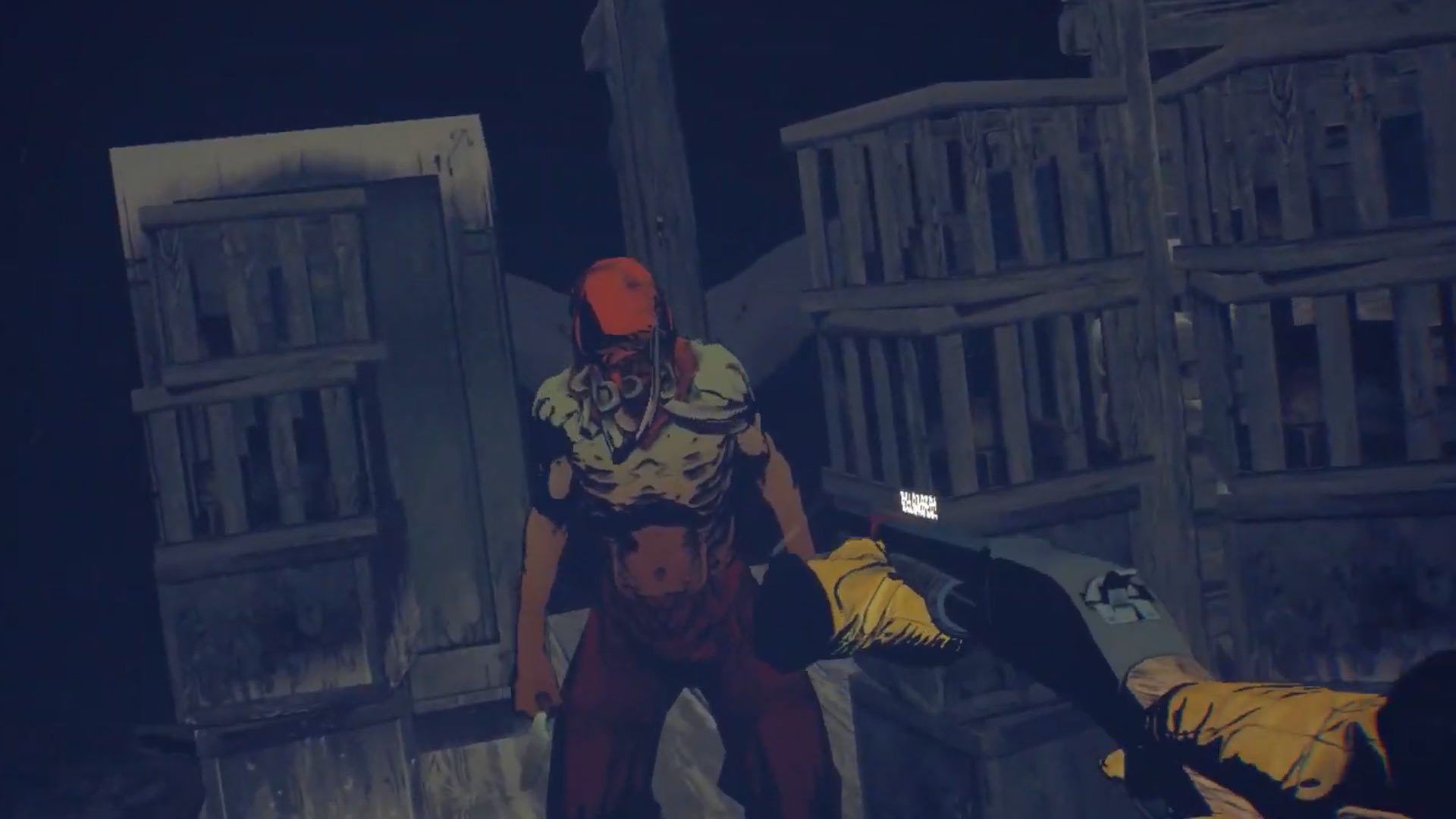
One of the bigger gripes I have with Lies Beneath is variety of enemies; it’s functionally on the low side even despite a dozen or so different character models. The game’s 20 levels are littered with interesting-looking baddies, although they’re effectively variations of weak or strong bullet sponges with a few weak spots sprinkled for good measure, which is underlined in a few wave-style battles that show them for their true colors. There are boss fights however to break up moments when complacency inevitably sets in, and thankfully a majority of bosses felt like they were designed with the expectation of the player using a previously learned skill. There was one in particular that threw a complete one-off curve ball which was an interesting turn of events.
In the six and half hours it took me to finish, I never ran into what I’d call a puzzle. There are obstacles, sure, but nothing that didn’t take some instruction that I’d learned only a few minutes prior. That doesn’t really bother me, although I think Lies Beneath could have gone the extra mile and inserted some interesting brain teasers to chew on amidst the never-ending howls and gnashing of teeth.
Immersion
Where combat fails to truly impress, the atmosphere takes the reins. It’s like stepping into a graphic novel, replete with comic book text bubbles littering the game at key points to tell the lion’s share of the story. The drab, unforgiving color palette reminded me of Sin City, albeit without the pop of pure momentary color among the game’s grey, black, brown, pale blue, and dirty shades of red. Some may accuse it of being repetitive and maybe too dark, but in the same breath the art style does an admirable job of suffocating any hope of reprieve.
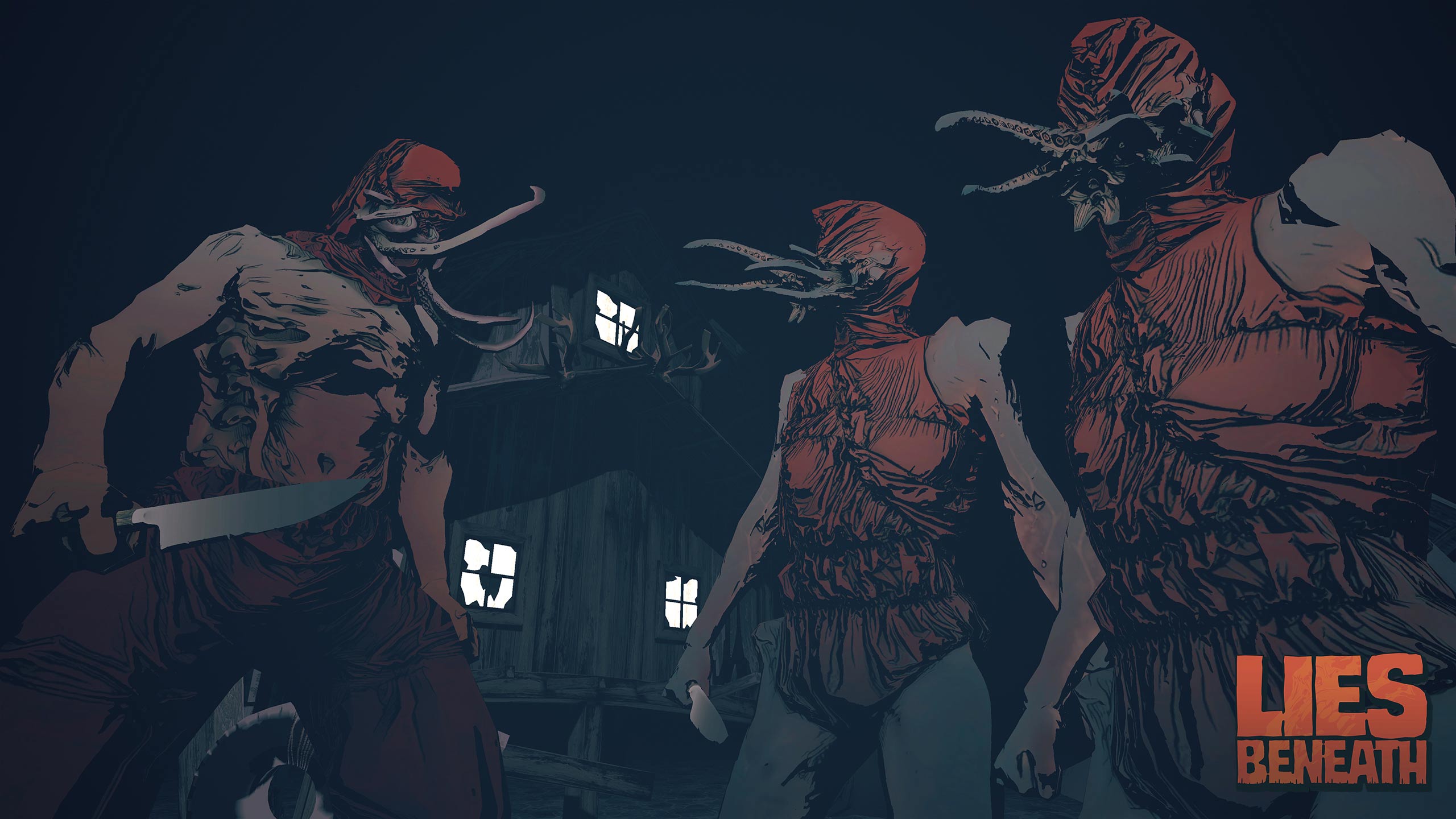
As a result of the comic book motif, at times I felt the story was a bit difficult to process. The word bubbles seem more artistically driven, and not necessarily what the player would actually need after they’ve just been chased through a maze by a machete-swinging demon. I personally would have liked voice overs here to reinforce the narrative at key points when reading what essentially is a floating sign board, although to each their own. Although it’s not the most deep, or engaging of stories, it is undeniably stylish.
Pet peeve incoming: force grab is the only way to interact with objects, which at times can be a bit unnerving when you simply want to grab a nearby magazine, box of ammo, what have you. This is a pretty minor issue in the grand scheme of things, but I firmly believe you should be able to grab something if your hand can ‘touch’ it. To that effect, reloading is pretty much a constant pain. Running out of bullets auto-ejects your mag and replaces it with a new one. Snapping the revolver closed or shoving in the mag into the pistol can be done one-handed, but it’s not super intuitive since both the mag and revolver’s chamber aren’t physics-based. More often than not you have to holster an item in your non-dominant hand to reload a gun in your other, which in the heat of battle may leave you flailing around and cursing.
My last sore point: guns don’t double as melee weapons. No amount of flailing with an empty shotgun or bare fists will do any damage, although you can technically block incoming objects thrown from baddies.
Comfort
I found Lies Beneath to be a bit challenging comfort-wise in my standard default playing style, which is free locomotion and snap-turning. Everything is so twisty and turny that I found myself rushing around past gads of near-field objects, stopping, turning, and basically making myself feel queasy in the process.
Thankfully you can teleport and look around naturally, although you’ll really have to overcome the primal urge to get through to the next save point as fast as possible. I don’t hate teleportation, but free locomotion is so much easier and immersive, so I tended to stick to my preferred movement style and just take the game in smaller chunks.
If you’re a smooth turning fan, Lies Beneath has you covered too, although you should be aware that only a minority of players seem to be unaffected by what essentially is one of the least comfortable locomotion options.

